At its core, air – pollution is a complex and widespread problem that affects people and the environment worldwide. In this section, we will explore the various aspects of air pollution, including its effects on our health and environment, as well as the solutions to reduce its impact.
Air – pollution has devastating effects on our health, particularly on our respiratory and cardiovascular systems. It can cause chronic illnesses, such as asthma and lung cancer, and can even lead to premature death. Furthermore, air pollution also has negative impacts on our environment, including global warming, loss of biodiversity, and acid rain.
With the increasing awareness of the detrimental effects of air pollution, governments and organizations worldwide have implemented measures to combat this problem. Some of the solutions include promoting renewable energy, improving public transportation, implementing stricter emission standards, and raising awareness of individual actions to reduce air pollution.
In the following sections, we will delve deeper into the causes and impacts of air pollution, as well as the effective solutions and government initiatives to mitigate this issue. Join us as we uncover the facts, impacts, and solutions to combat air pollution and create a cleaner and healthier environment for us all.
What is Air – Pollution?
Air pollution refers to the presence of harmful substances, including gases, particles, and biological molecules, in the earth’s atmosphere. These pollutants can have adverse effects on our health, the environment, and the climate.
There are many causes of air – pollution, including natural events such as volcanic eruptions and wildfires, as well as human activities such as transportation, industrial processes, and energy production. These activities release a wide variety of pollutants into the air, which can have different effects depending on their chemical composition and concentration.
Types of Air Pollutants
Air pollutants can be classified into two main categories: primary and secondary pollutants. Primary pollutants are emitted directly into the air from their source, while secondary pollutants are formed through chemical reactions between primary pollutants and other substances in the atmosphere.
Some common primary pollutants include:
- Particulate matter (PM): tiny particles released into the air by vehicles, industry, and other sources.
- Sulfur dioxide (SO2): a gas emitted primarily by power plants and industrial processes, which can cause respiratory problems and acid rain.
- Nitrogen oxides (NOx): gases released by vehicles and industry, which contribute to smog, acid rain, and respiratory issues.
- Carbon monoxide (CO): a gas emitted by cars and trucks, which can cause headaches, dizziness, and nausea.
- Volatile organic compounds (VOCs): gases released by paints, solvents, and other products, which can cause respiratory problems and contribute to the formation of smog.
Some common secondary pollutants include:
- Ground-level ozone (O3): a gas formed by the reaction of NOx and VOCs in the presence of sunlight, which can cause respiratory problems and damage vegetation.
- Sulfuric acid (H2SO4): a component of acid rain, which can harm ecosystems and corrode buildings and infrastructure.
- Nitric acid (HNO3): another component of acid rain, which can also harm ecosystems and corrode structures.
Understanding the types of air pollutants is crucial in developing effective solutions for reducing air pollution. In the next section, we will examine the impacts of air pollution in more detail.

Air pollution has detrimental effects on both the environment and human health. It can cause a variety of health problems ranging from minor irritation to severe respiratory and cardiovascular diseases, ultimately leading to premature mortality. The types of air – pollutants and their corresponding effects are:
| Type of Pollutant | Effects |
|---|---|
| Particulate Matter (PM) | PM can cause respiratory irritation, and worsen asthma, and other lung diseases. It can also lead to cardiovascular problems and premature death. |
| Sulfur Dioxide (SO2) | SO2 can lead to respiratory problems, aggravate asthma, and cause other pulmonary illnesses. Long-term exposure can lead to chronic bronchitis and emphysema. |
| Nitrogen Oxides (NOx) | NOx can contribute to the formation of ground-level ozone and PM, which can cause respiratory problems and cardiovascular diseases. It can also contribute to the development of acid rain, which can negatively impact the environment and wildlife. |
| Carbon Monoxide (CO) | CO can cause dizziness, headaches, and nausea in humans. High levels of CO can lead to death as it binds to hemoglobin in the bloodstream, reducing the amount of oxygen uptake. |
| Volatile Organic Compounds (VOCs) | VOCs can cause respiratory irritation, nausea, and headaches, and contribute to the formation of ground-level ozone and PM. |
In addition to health impacts, air pollution can also have adverse effects on the environment. For instance, it can lead to the acidification of lakes and rivers, which can harm aquatic life. It can also lead to the destruction of crops, forests, and other vegetation. Furthermore, air pollution can contribute to climate change, which can have long-lasting and far-reaching impacts on the planet.
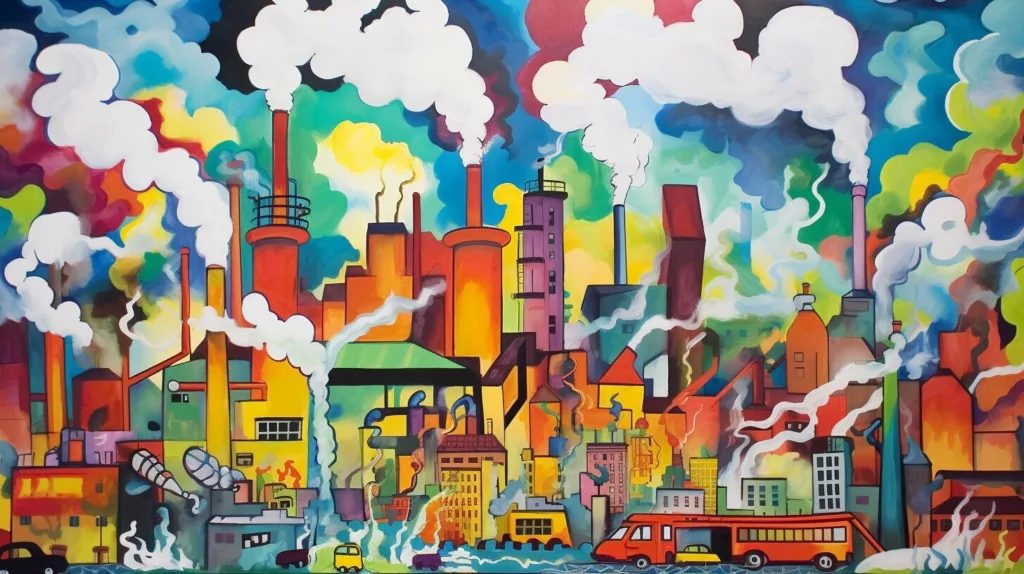
It is crucial to understand the effects of air pollution to comprehend the severity of the issue. By implementing effective solutions, we can reduce the harmful effects of air pollution and create a healthier environment for ourselves and future generations.
Causes of Air – Pollution
There are several primary sources of air pollution, including industrial emissions, vehicular pollution, agricultural practices, and household activities. Each of these contributes to the overall air pollution problem in its unique way.
Industrial emissions are a major cause of air – pollution. Factories and power plants release a variety of pollutants, such as sulfur dioxide, nitrogen oxides, and particulate matter. These emissions contribute to acid rain, smog, and other forms of air pollution that can have serious health and environmental impacts.
Vehicular pollution is another significant cause of air – pollution. Cars, trucks, and other vehicles release a range of pollutants, including carbon monoxide, nitrogen oxides, and particulate matter. These emissions contribute to smog and other types of air pollution that can cause respiratory problems, cardiovascular diseases, and other health issues.
Agricultural practices, such as the use of fertilizers and pesticides, also contribute to air pollution. These chemicals can release nitrogen oxides and other pollutants into the air, leading to health and environmental problems.
Household activities, such as burning wood or coal for heating and cooking, can also contribute to air pollution. These activities release particulate matter and other pollutants into the air, leading to respiratory problems and other health issues.
It is important to address the causes of air – pollution to effectively combat this issue. By reducing emissions from industrial sources, promoting alternative transportation methods, and encouraging sustainable agricultural practices, we can work towards a cleaner and healthier environment for all.
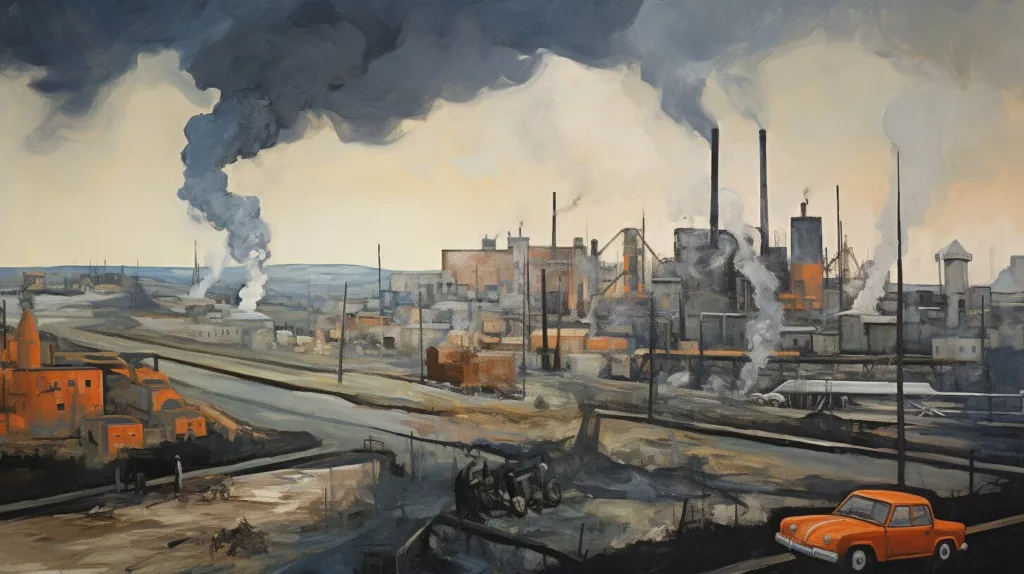
Primary pollutants are harmful substances that are directly released into the atmosphere by human activities or natural events. These pollutants can have serious impacts on both the environment and human health. Here, we will explore the most common primary pollutants and their sources.
Particulate Matter
Particulate matter, also known as PM, is a type of air pollutant that consists of tiny particles suspended in the air. These particles can come from natural sources, such as dust and wildfires, or human sources, such as industrial processes and transportation. PM can have serious health effects, including respiratory problems and lung damage.
Sulfur Dioxide
Sulfur dioxide, or SO2, is a gas that is produced by burning fossil fuels, such as coal and oil. It is also emitted by industrial processes and natural events like volcanic eruptions. SO2 can cause respiratory problems, acid rain, and damage to plants and wildlife.
Nitrogen Oxides
Nitrogen oxides, or NOx, are gases that are released by burning fossil fuels or through natural processes like lightning. NOx can cause respiratory problems, contribute to the formation of smog, and play a role in climate change.
Carbon Monoxide
Carbon monoxide, or CO, is a toxic gas that is produced by incomplete combustion of fuels like gas, oil, and coal. It can cause headaches, dizziness, and even death at high levels of exposure.
Volatile Organic Compounds
Volatile organic compounds, or VOCs, are gases that are emitted by products such as paints, solvents, and cleaning agents. They can contribute to the formation of smog and have harmful health effects, including respiratory problems, headaches, and nausea.
Reducing primary pollutants requires a concerted effort from individuals, businesses, and governments. By adopting clean energy practices, promoting sustainable transportation options, and reducing our reliance on harmful products and processes, we can work together to improve the quality of our air and protect our health and environment.
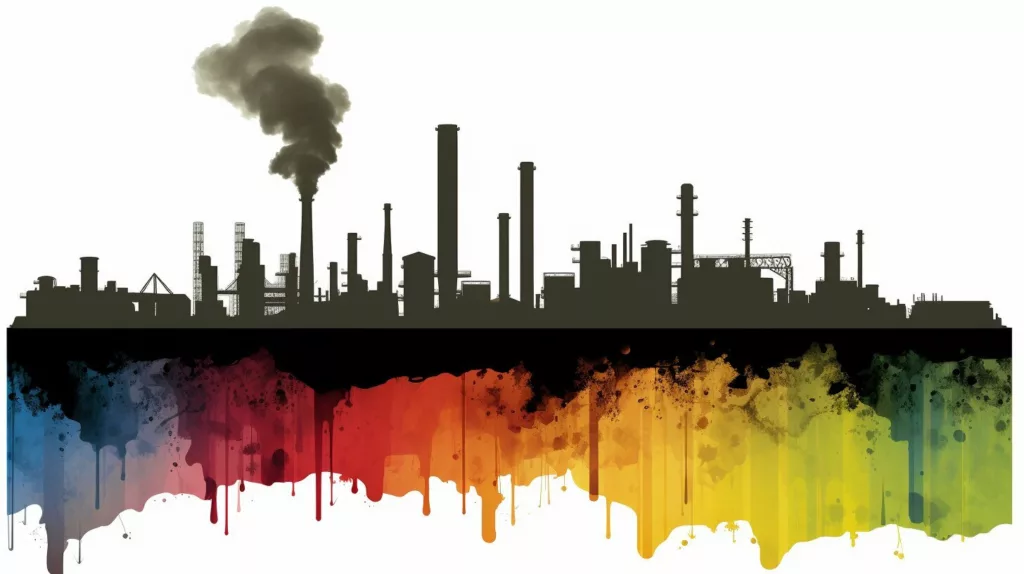
Secondary pollutants are formed through chemical reactions in the atmosphere. Some of the most common secondary pollutants include ground-level ozone, sulfuric acid, and nitric acid.
Ground-level ozone, also known as bad ozone, is formed when sunlight reacts with pollutants such as nitrogen oxides and volatile organic compounds. This type of ozone can cause respiratory problems, particularly among individuals with pre-existing conditions such as asthma or bronchitis. It can also harm plants and crops, reducing agricultural yields.
Sulfuric acid and nitric acid can form through reactions between sulfur dioxide and nitrogen oxides in the atmosphere. These acids can cause acid rain, which can damage forests, crops, and bodies of water. They also contribute to the corrosion of buildings and other infrastructure.
In addition to these specific examples, secondary pollutants can also contribute to the overall air pollution problem and its effects on human health and the environment.
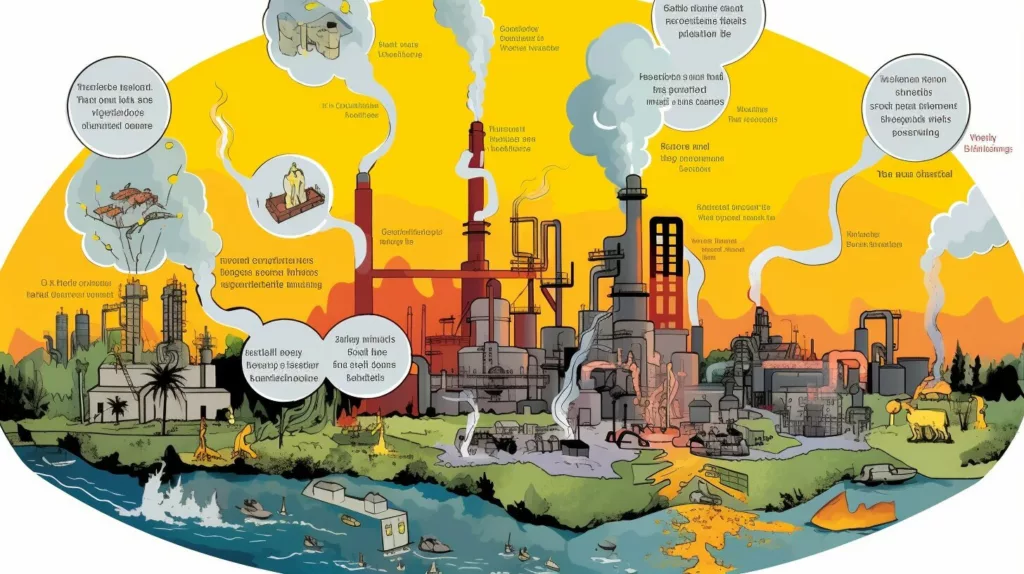
To combat the formation of secondary pollutants, it’s important to reduce primary pollutant emissions and promote clean energy sources. This can be achieved through initiatives such as implementing stricter emission standards for vehicles and industrial practices, promoting the use of renewable energy, and investing in public transportation.
Overall, by taking proactive steps to reduce primary pollutants and limit the formation of secondary pollutants, we can work towards a cleaner and healthier environment for all.
Effective Solutions for Air Pollution
Reducing air pollution requires a collective effort, and there are several effective solutions that can help mitigate its causes and impacts. Here are some practical measures:
- Implement stricter emission standards: Governments can enforce stringent emission regulations for industries, vehicles, and power plants to limit the release of harmful pollutants into the atmosphere.
- Promote renewable energy sources: Encouraging the use of clean and sustainable energy sources, such as solar and wind power, can greatly reduce the reliance on fossil fuels and minimize emissions.
- Improve public transportation: Investing in efficient and affordable public transportation systems, like buses and trains, can encourage people to leave their cars at home and reduce traffic congestion and emissions.
- Raise awareness: Educating people about the causes and impacts of air pollution and encouraging individual actions, such as carpooling, using public transportation, or cycling, can also contribute to mitigating air pollution.
Implementing these solutions can help reduce air pollution significantly, but they require sustained effort and cooperation from various stakeholders, including governments, businesses, and individuals.

Air pollution is a complex problem with several causes and far-reaching impacts. But by implementing effective solutions and working collectively, we can combat this issue and create a cleaner and healthier environment for ourselves and future generations.
Government Initiatives and Policies
Addressing air pollution requires a collaborative effort between governments, industries, and individuals. To tackle the causes of air pollution, many countries have implemented initiatives and policies to reduce emissions and promote sustainable practices.
Local Initiatives
Local governments are taking the lead in implementing measures to reduce air pollution. For example, some cities have implemented low-emission zones in which only vehicles meeting certain emission standards are allowed to enter. Other initiatives include promoting the use of electric vehicles, encouraging the adoption of renewable energy, and implementing stricter regulations on industrial emissions.
| City | Initiative |
|---|---|
| Los Angeles | The Sustainable City Plan focuses on reducing greenhouse gas emissions and increasing the use of renewable energy sources. |
| Beijing | The city has implemented a cap-and-trade system to limit emissions from major industries. |
| London | The low-emission zone requires vehicles to meet certain standards to enter the city center. |
National Policies
Many countries have implemented national policies to address air pollution. For example, the United States has established the Clean Air Act, which sets national air quality standards and regulates emissions from industrial sources. In the European Union, the Industrial Emissions Directive regulates emissions from industrial sources and sets binding emission limits for major pollutants.
International Agreements
International agreements and conventions are also essential in tackling air pollution. The Paris Agreement, signed by 197 countries in 2015, aims to limit global warming to below 2 degrees Celsius by reducing greenhouse gas emissions. The United Nations Framework Convention on Climate Change (UNFCCC) provides a platform for countries to cooperate on climate change issues, including reducing air pollution.
Despite these initiatives, progress is often hindered by political, economic, and social challenges. Implementation and enforcement of policies can be difficult, and there may be resistance from industries that rely on polluting practices. Additionally, countries may have different levels of resources and capabilities to tackle air pollution. However, continued efforts and cooperation at all levels are necessary to achieve a cleaner and healthier environment.
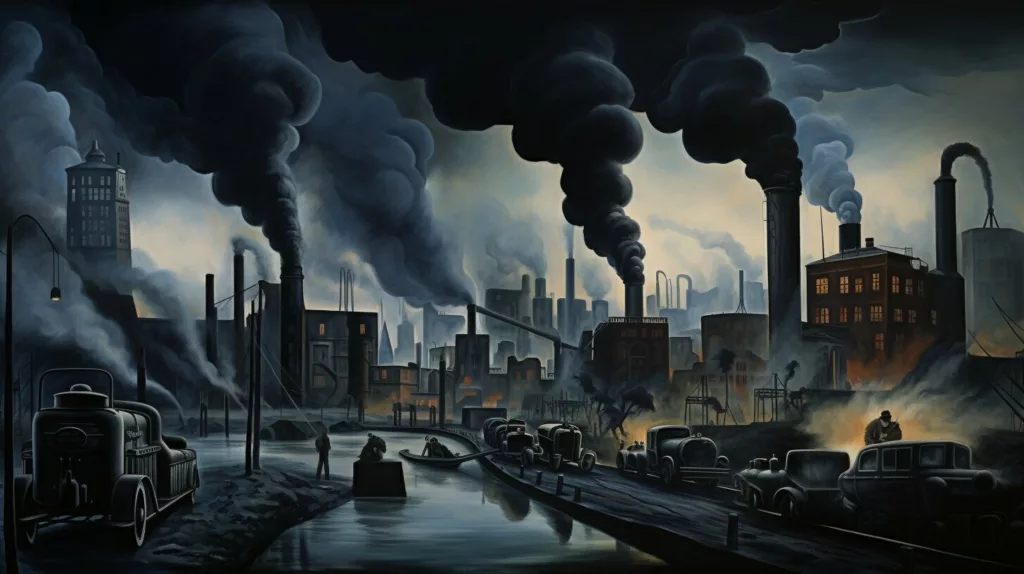 In conclusion, we have explored the complex issue of air pollution, its causes, impacts, and solutions. We have learned that air pollution is a serious global issue that affects not only the environment but also human health. The sources of air pollution are diverse, ranging from industrial emissions to vehicular pollution, agricultural practices, and household activities. The impacts of air pollution are pervasive and can lead to respiratory problems, cardiovascular diseases, and other health issues. Air pollution also contributes to global warming and affects wildlife and ecosystems.
In conclusion, we have explored the complex issue of air pollution, its causes, impacts, and solutions. We have learned that air pollution is a serious global issue that affects not only the environment but also human health. The sources of air pollution are diverse, ranging from industrial emissions to vehicular pollution, agricultural practices, and household activities. The impacts of air pollution are pervasive and can lead to respiratory problems, cardiovascular diseases, and other health issues. Air pollution also contributes to global warming and affects wildlife and ecosystems.
Thankfully, there are practical solutions to reduce air pollution. Governments, individuals, and businesses can take action to combat air pollution by implementing stricter emission standards, promoting renewable energy sources, improving public transportation, and raising awareness about the importance of individual actions in reducing air pollution. Governments play a crucial role in addressing air pollution by implementing policies, regulations, and initiatives to mitigate air pollution.
However, challenges remain in implementing and enforcing these measures. We emphasize the importance of taking immediate action to combat air pollution. By understanding the causes, impacts, and solutions of air pollution, we can work together to create a cleaner and healthier future. Let us take action today to reduce air pollution and improve the quality of our air for generations to come.
Happy Learning
Also, Read,
Stylish Frameless Shower Doors
FAQ
What is air pollution?
Air pollution refers to the presence of harmful substances in the air that can negatively impact the environment and human health. These substances, known as air pollutants, can be emitted from various sources, such as industrial activities, transportation, and natural processes.
What are the impacts of air pollution?
Air pollution has wide-ranging impacts on our environment, climate, and human health. It can lead to respiratory problems, cardiovascular diseases, and other health issues. Air pollution also contributes to global warming, damages ecosystems, and negatively affects wildlife.
What are the causes of air pollution?
The primary causes of air pollution include industrial emissions, vehicular pollution, agricultural practices, and household activities. These activities release pollutants such as greenhouse gases, particulate matter, and toxic chemicals into the atmosphere.
What are primary pollutants?
Primary pollutants are directly emitted into the air from various sources. They include substances such as particulate matter, sulfur dioxide, nitrogen oxides, carbon monoxide, and volatile organic compounds. These pollutants can have adverse effects on both human health and the environment.
What are secondary pollutants?
Secondary pollutants are formed through chemical reactions in the atmosphere. They include substances such as ground-level ozone, sulfuric acid, and nitric acid. These pollutants are not directly emitted but are formed when primary pollutants react with other substances in the air.
What are some effective solutions for air pollution?
There are several effective solutions to reduce air pollution. These include implementing stricter emission standards for industries and vehicles, promoting the use of renewable energy sources, improving public transportation systems, and raising awareness about individual actions that can contribute to reducing air pollution.
What are some government initiatives and policies to address air pollution?
Governments have implemented various initiatives and policies to mitigate air pollution. These include regulations on emissions, financial incentives for renewable energy projects, and promoting sustainable urban planning. However, implementing and enforcing these measures can present challenges.
What is the importance of understanding air pollution?
Understanding air pollution is crucial as it helps raise awareness about the issue and its impacts on our environment and health. By understanding the causes, impacts, and solutions, we can take collective action to reduce air pollution and create a cleaner and healthier future.



